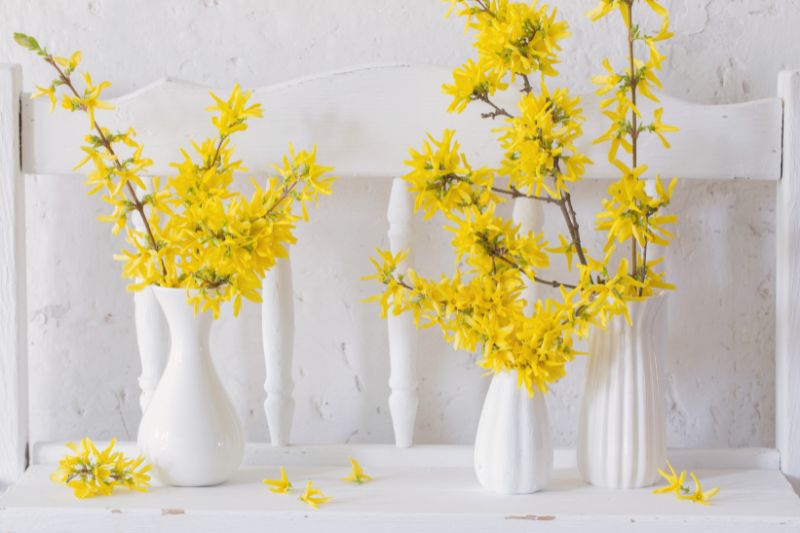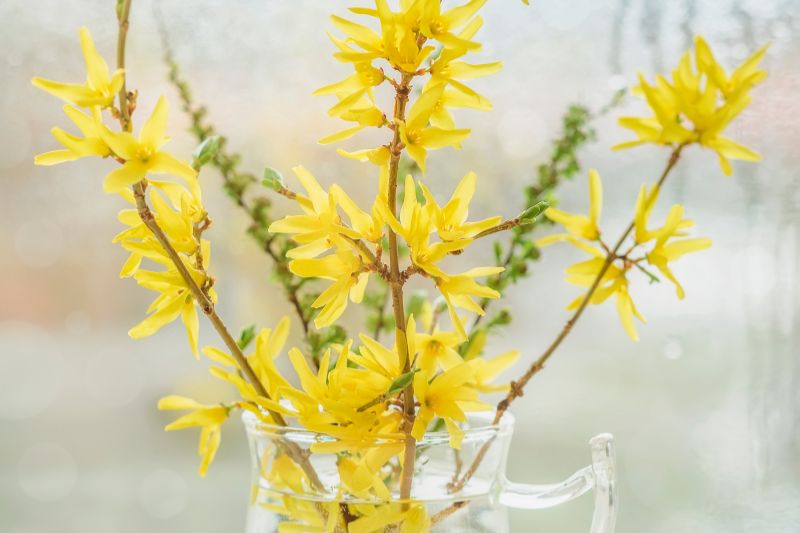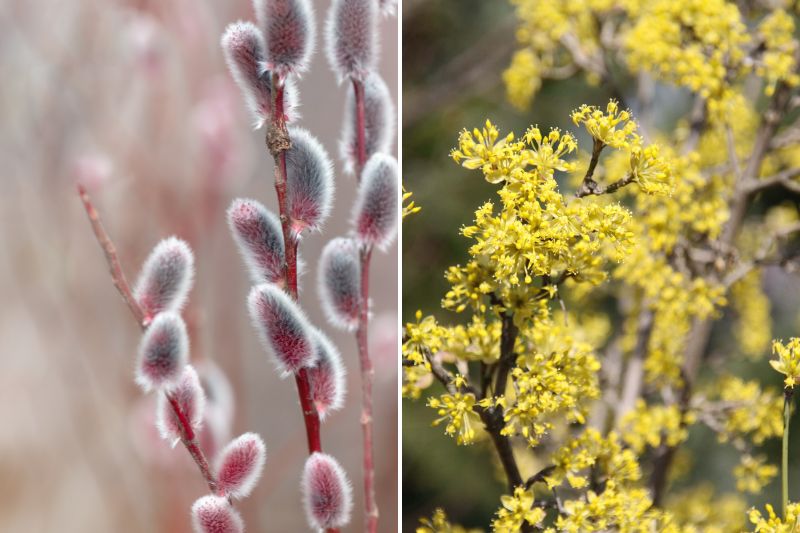Forsythia, with its sparkling golden flowers, heralds arrival of spring. This bush, symbol of renewal, can also brighten your interior. Forcing Forsythia branches allows you to awaken their splendour before nature itself stirs. This tutorial will guide you through essential steps to turn dormant branches into a resplendent bouquet, bringing a touch of freshness and colour to your living space. Get ready to capture essence of spring with beautifully forced Forsythia branches!

When to force Forsythia branches?
Ideal time to start forcing is late winter or early spring, just before natural buds begin to open outside.
Generally, this period falls between late January and early March, depending on your region’s climate. Watch Forsythia bushes: when you see first buds swelling and taking on a slightly yellow tint, it is a sign the plant is preparing to flower and that it’s the perfect moment to cut and force branches.
Selecting branches and preparation
Success of your Forsythia bouquet begins with careful selection of branches. Choose vigorous, healthy branches, ideally those bearing well-formed buds. Age of branch is crucial: one- or two-year-old branches, recognisable by their slightly paler colour and flexibility, are perfect. On our site, varieties such as Forsythia x intermedia 'Spectabilis' or 'Mikador' offer abundant flowering and are ideal for forcing.
For cutting, use a sharp, clean and disinfected pruning shear to avoid transmitting diseases from one plant to another or damaging bush tissues. Best time to cut is in the morning, when plant is full of water. Make a slanted cut about 1 cm above an outer bud to promote healthy future growth. Cut length depends on size of your vase and desired effect, but 20–50 cm is generally ideal for a harmonious bouquet.
Immediately after cutting, plunge cut end of branches into fresh water. This prevents air entering plant vessels, which could block water absorption later — essential for successful forcing.

Forcing the branches
After cutting and a short soak in fresh water for 2–3 hours, clean the branches, removing lower buds and leaves that could rot in the water.
Tip: At this stage, some gardeners split base of branch with a knife to help it absorb water better.
Next, to encourage branches to wake up, place them in a vase filled with warm water. Warm water stimulates sap rise and encourages buds to open.
Place vase in a bright spot, in a room at ambient temperature (18–20 °C is perfect!). Avoid placing vase near heat sources such as radiators or fireplace, which could dry air and harm flowering of branches.
Care of forced branches
Once Forsythia branches are in a vase, attentive care will help prolong beauty of your bouquet:
- If indoor air is dry, spray water once a day on branches.
- Change water every two days, ensuring it is at room temperature so as not to shock branches. Renewing water also limits growth of bacteria.
- Observe your branches: if you notice buds not opening or flowers seeming to fade prematurely, this may indicate need for more light or a problem with the water or environment.
- To feed buds and support health of branches, you can add a cut-flower solution to the water or a pinch of sugar.

Bouquet pairing ideas with Forsythia branches
Forsythia branches, with their luminous flowering, pair wonderfully with a variety of flowers and natural elements. Here are some pairing ideas to create harmonious, eye-catching bouquets:
- With spring flowers: Combine Forsythia with narcissi or tulips for a bouquet that fully celebrates spring. Contrast of shapes and colours will add depth to your arrangement.
- Colour contrast: For a dynamic bouquet, pair Forsythia with flowers in complementary shades such as blue iris.
- Varied textures: Add branches of willow with their fluffy aments (or even better a corkscrew willow!) or Cornus mas (Cornelian cherry) to add texture and movement to your bouquet.
- Touches of greenery: Add foliage such as eucalyptus, laurel, holly or rhododendron for a fuller, more varied bouquet. Green of the foliage will highlight Forsythia’s bright yellow and bring freshness to the whole.

































Comments